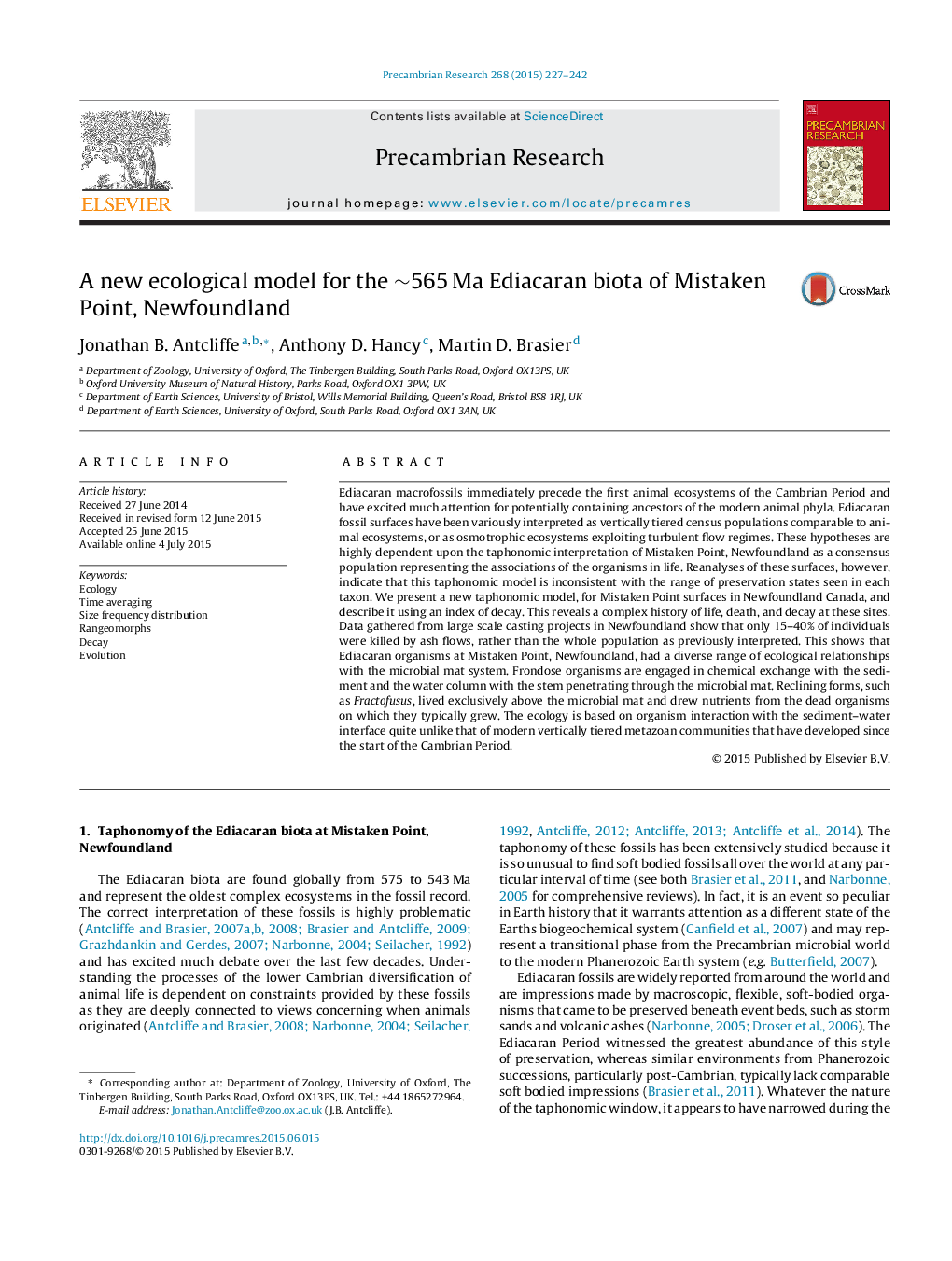| Article ID | Journal | Published Year | Pages | File Type |
|---|---|---|---|---|
| 4722638 | Precambrian Research | 2015 | 16 Pages |
•Many generations of Ediacaran organisms are found at Mistaken Point, Newfoundland.•Some Ediacaran organisms like Fractofusus fed off decayed frondose Ediacarans.•Discs and stems are below the preserving mat so are positive relief.•Dead fronds are overgrown by the mat or fall on top of the mat with ash influx.•The ecology of Mistaken Point must account for time averaging of the organisms.
Ediacaran macrofossils immediately precede the first animal ecosystems of the Cambrian Period and have excited much attention for potentially containing ancestors of the modern animal phyla. Ediacaran fossil surfaces have been variously interpreted as vertically tiered census populations comparable to animal ecosystems, or as osmotrophic ecosystems exploiting turbulent flow regimes. These hypotheses are highly dependent upon the taphonomic interpretation of Mistaken Point, Newfoundland as a consensus population representing the associations of the organisms in life. Reanalyses of these surfaces, however, indicate that this taphonomic model is inconsistent with the range of preservation states seen in each taxon. We present a new taphonomic model, for Mistaken Point surfaces in Newfoundland Canada, and describe it using an index of decay. This reveals a complex history of life, death, and decay at these sites. Data gathered from large scale casting projects in Newfoundland show that only 15–40% of individuals were killed by ash flows, rather than the whole population as previously interpreted. This shows that Ediacaran organisms at Mistaken Point, Newfoundland, had a diverse range of ecological relationships with the microbial mat system. Frondose organisms are engaged in chemical exchange with the sediment and the water column with the stem penetrating through the microbial mat. Reclining forms, such as Fractofusus, lived exclusively above the microbial mat and drew nutrients from the dead organisms on which they typically grew. The ecology is based on organism interaction with the sediment–water interface quite unlike that of modern vertically tiered metazoan communities that have developed since the start of the Cambrian Period.
